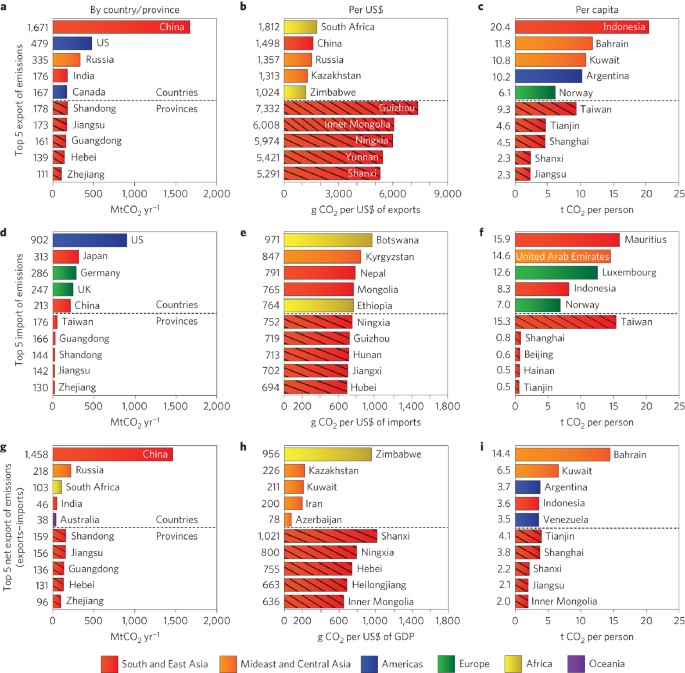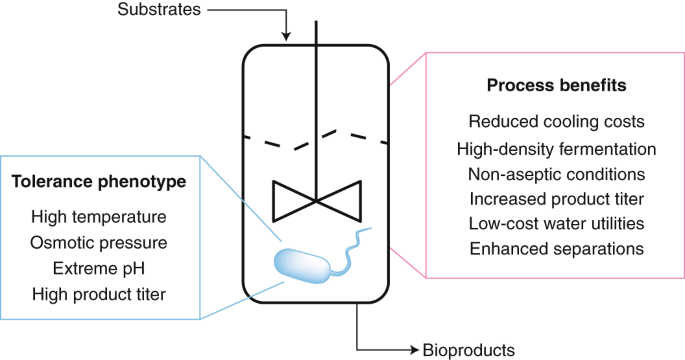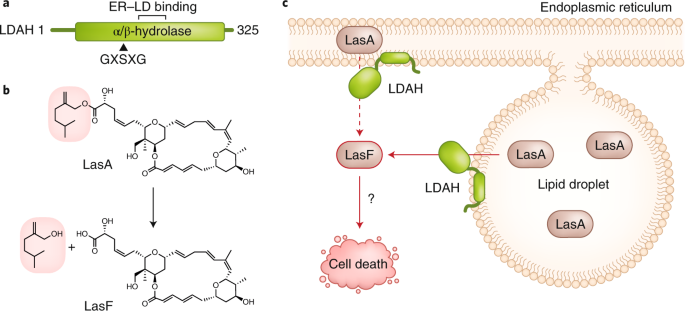
- Select a language for the TTS:
- UK English Female
- UK English Male
- US English Female
- US English Male
- Australian Female
- Australian Male
- Language selected: (auto detect) - EN
Play all audios:
ABSTRACT International trade has become the fastest growing driver of global carbon emissions, with large quantities of emissions embodied in exports from emerging economies. International
trade with emerging economies poses a dilemma for climate and trade policy: to the extent emerging markets have comparative advantages in manufacturing, such trade is economically efficient
and desirable. However, if carbon-intensive manufacturing in emerging countries such as China entails drastically more CO2 emissions than making the same product elsewhere, then trade
increases global CO2 emissions. Here we show that the emissions embodied in Chinese exports, which are larger than the annual emissions of Japan or Germany, are primarily the result of
China’s coal-based energy mix and the very high emissions intensity (emission per unit of economic value) in a few provinces and industry sectors. Exports from these provinces and sectors
therefore represent targeted opportunities to address the climate–trade dilemma by either improving production technologies and decarbonizing the underlying energy systems or else reducing
trade volumes. Access through your institution Buy or subscribe This is a preview of subscription content, access via your institution ACCESS OPTIONS Access through your institution
Subscribe to this journal Receive 12 print issues and online access $209.00 per year only $17.42 per issue Learn more Buy this article * Purchase on SpringerLink * Instant access to full
article PDF Buy now Prices may be subject to local taxes which are calculated during checkout ADDITIONAL ACCESS OPTIONS: * Log in * Learn about institutional subscriptions * Read our FAQs *
Contact customer support SIMILAR CONTENT BEING VIEWED BY OTHERS THE NARROWING GAP IN DEVELOPED AND DEVELOPING COUNTRY EMISSION INTENSITIES REDUCES GLOBAL TRADE’S CARBON LEAKAGE Article Open
access 24 June 2023 REGIONAL TRADE AGREEMENT BURDENS GLOBAL CARBON EMISSIONS MITIGATION Article Open access 20 January 2022 THE ENVIRONMENTAL AND ECONOMIC IMPACTS OF INDIA’S EMERGENCE AS THE
GLOBAL MANUFACTURING HUB Article Open access 12 February 2025 REFERENCES * _Kyoto Protocol to the United Nations Framework Convention on Climate Change_ (UNFCCC, 1997). * _COP15 Copenhagen
Accord_ (UNFCCC, 2009); http://unfccc.int/files/meetings/cop_15/application/pdf/cop15_cph_auv.pdf * Le Quéré, C. et al. The global carbon budget 1959–2011. _Earth Syst. Sci. Data_ 5, 165–185
(2013). Article Google Scholar * Andres, R. J. et al. A synthesis of carbon dioxide emissions from fossil-fuel combustion. _Biogeosciences_ 9, 1845–1871 (2012). Article CAS Google
Scholar * Raupach, M. R. et al. Global and regional drivers of accelerating CO2 emissions. _Proc. Natl Acad. Sci. USA_ 104, 10288–10293 (2007). Article CAS Google Scholar * Liu, Z. et
al. A low-carbon road map for China. _Nature_ 500, 143–145 (2013). Article CAS Google Scholar * Weber, C. L., Peters, G. P., Guan, D. & Hubacek, K. The contribution of Chinese exports
to climate change. _Energy Policy_ 36, 3572–3577 (2008). Article Google Scholar * Feng, K. et al. Outsourcing CO2 within China. _Proc. Natl Acad. Sci. USA_ 110, 11654–11659 (2013).
Article CAS Google Scholar * Le Quéré, C. et al. Global carbon budget 2014. _Earth Syst. Sci. Data_ 7, 47–85 (2015). Article Google Scholar * Jakob, M. & Marschinski, R.
Interpreting trade-related CO2 emission transfers. _Nature Clim. Change_ 3, 19–23 (2013). Article Google Scholar * Minx, J. et al. A “Carbonizing Dragon”: China’s fast growing CO2
emissions revisited. _Environ. Sci. Technol._ 45, 9144–9153 (2011). Article CAS Google Scholar * Guan, D., Peters, G. P., Weber, C. L. & Hubacek, K. Journey to world top emitter: An
analysis of the driving forces of China’s recent CO2 emissions surge. _Geophys. Res. Lett._ 36, L04709 (2009). Article Google Scholar * Jiang, X. et al. Revealing the hidden health costs
embodied in Chinese exports. _Environ. Sci. Technol._ 49, 4381–4388 (2015). Article CAS Google Scholar * Liu, Z. _China’s Carbon Emissions Report 2015_ (Harvard Kennedy School, 2015).
Google Scholar * Liu, Z., Geng, Y., Lindner, S. & Guan, D. Uncovering China’s greenhouse gas emission from regional and sectoral perspectives. _Energy_ 45, 1059–1068 (2012). Article
Google Scholar * Feng, K., Siu, Y. L., Guan, D. & Hubacek, K. Analyzing drivers of regional carbon dioxide emissions for China. _J. Ind. Ecol._ 16, 600–611 (2012). Article CAS Google
Scholar * Lindner, S., Liu, Z., Guan, D., Geng, Y. & Li, X. CO2 emissions from China’s power sector at the provincial level: Consumption versus production perspectives. _Renew. Sustain.
Energy Rev._ 19, 164–172 (2013). Article Google Scholar * Liu, Z. et al. Embodied energy use in China’s industrial sectors. _Energy Policy_ 49, 751–758 (2012). Article Google Scholar *
Ang, B. W. The LMDI approach to decomposition analysis: A practical guide. _Energy Policy_ 33, 867–871 (2005). Article Google Scholar * Friedlingstein, P. et al. Persistent growth of CO2
emissions and implications for reaching climate targets. _Nature Geosci._ 7, 709–715 (2014). Article CAS Google Scholar * Liu, Z., Xi, F. & Guan, D. Climate negotiations: Tie carbon
emissions to consumers. _Nature_ 493, 304–305 (2013). Article CAS Google Scholar * Davis, S. J., Peters, G. P. & Caldeira, K. The supply chain of CO2 emissions. _Proc. Natl Acad. Sci.
USA_ 108, 18554–18559 (2011). Article CAS Google Scholar * Davis, S. J. & Caldeira, K. Consumption-based accounting of CO2 emissions. _Proc. Natl Acad. Sci. USA_ 107, 5687–5692
(2010). Article CAS Google Scholar * National Bureau of Statistics _China Statistical Yearbook 2013_ (China Statistics Press, 2013). Google Scholar * Yang, Y. & Suh, S. Environmental
impacts of products in China. _Environ. Sci. Technol._ 45, 4102–4109 (2011). Article CAS Google Scholar * _Introduction to LCA with SimaPro 7_ (PRé Consultants, 2008). * Yang, D., Liu,
J., Yang, J. & Ding, N. Life-cycle assessment of China’s multi-crystalline silicon photovoltaic modules considering international trade. _J. Cleaner Prod._ 94, 35–45 (2015). Article CAS
Google Scholar * Liu, Z. et al. Climate policy: Steps to China’s carbon peak. _Nature_ 522, 279–281 (2015). Article CAS Google Scholar * Guan, D. et al. Determinants of stagnating
carbon intensity in China. _Nature Clim. Change_ 4, 1017–1023 (2014). Article CAS Google Scholar * Liu, Z. et al. Reduced carbon emission estimates from fossil fuel combustion and cement
production in China. _Nature_ 524, 335–338 (2015). Article CAS Google Scholar * IPCC _2006 IPCC Guidelines for National Greenhouse Gas Inventories_ VOL. 4 (IGES, 2006). Google Scholar *
Feng, K., Hubacek, K., Pfister, S., Yu, Y. & Sun, L. Virtual scarce water in China. _Environ. Sci. Technol._ 48, 7704–7713 (2014). Article CAS Google Scholar * Lenzen, M. et al.
International trade of scarce water. _Ecol. Econ._ 94, 78–85 (2013). Article Google Scholar * Wiedmann, T. O. et al. The material footprint of nations. _Proc. Natl Acad. Sci. USA_ 112,
6271–6276 (2015). Article CAS Google Scholar * Lenzen, M. et al. International trade drives biodiversity threats in developing nations. _Nature_ 486, 110–112 (2012). Article Google
Scholar * Yu, Y., Feng, K. & Hubacek, K. Tele-connecting local consumption to global land use. _Glob. Environ. Change_ 23, 1178–1186 (2013). Article Google Scholar * Weinzettel, J.,
Hertwich, E. G., Peters, G. P., Steen-Olsen, K. & Galli, A. Affluence drives the global displacement of land use. _Glob. Environ. Change_ 23, 433–438 (2013). Article Google Scholar *
Guan, D., Liu, Z., Geng, Y., Lindner, S. & Hubacek, K. The gigatonne gap in China’s carbon dioxide inventories. _Nature Clim. Change_ 2, 672–675 (2012). Article CAS Google Scholar *
Narayanan, B. G., Aguiar, A. & Walmsley, T. L. _Global Trade, Assistance, and Production: The GTAP 8 Data Base_ (Purdue University, 2012). Google Scholar * Liu, W. _Theories and
Practice of Constructing China’s Interregional Input–Output Tables between 30 Provinces in 2007_ (Chinese Statistics Press, 2012). Google Scholar Download references ACKNOWLEDGEMENTS This
work was supported by China’s National Basic Research Program (2014CB441301), the State Key Laboratory of Urban and Regional Ecology, Chinese Academy of Sciences (SKLURE 2015-2-6), and
Natural Science Foundation of China project (41328008). Z.L. acknowledges the National Natural Science Foundation of China-NSFC 41501605, the China Sustainable Energy Program of Energy
Foundation (G-1407-21749), the Giorgio Ruffolo fellowship and the support from Italy’s Ministry for Environment, Land and Sea. S.J.D. acknowledges support from the Institute of Applied
Ecology, Chinese Academy of Sciences Fellowships for Young International Distinguished Scientists. S.L. acknowledges the support of the Dow Sustainability Fellows Program. D.G. acknowledges
the Economic and Social Research Council funded project ‘Dynamics of Green Growth in European and Chinese Cities’ (ES/L016028) and his Philip Leverhulme Prize. AUTHOR INFORMATION AUTHORS AND
AFFILIATIONS * John F. Kennedy School of Government, Harvard University, Cambridge, Massachusetts 02138, USA Zhu Liu & Laura Diaz Anadon * Resnick Sustainability Institute, California
Institute of Technology, Pasadena, California 91125, USA Zhu Liu * Department of Land Economy, Cambridge Centre for Climate Change Mitigation Research, University of Cambridge, 19 Silver
Street, Cambridge CB3 9EP, UK, Zhu Liu * Department of Earth System Science, University of California, Irvine, Irvine, California 92697, USA Steven J. Davis * Institute of Applied Ecology,
Chinese Academy of Sciences, Shenyang 110016, China Steven J. Davis * Department of Geographical Sciences, University of Maryland, College Park, Maryland 20742, USA Kuishuang Feng &
Klaus Hubacek * Center for Environment Policy Research, Institute of Policy and Management, Chinese Academy of Sciences, Beijing 100190, China Kuishuang Feng * School of Natural Resources
and Environment, University of Michigan, Ann Arbor, Michigan 48109-1041, USA Sai Liang * Department of Science, Technology, Engineering and Public Policy, University College, London W1T 6EY,
UK Laura Diaz Anadon * State Key Joint Laboratory of Environmental Simulation and Pollution Control, School of Environment, Beijing Normal University, Beijing 100875, China Bin Chen * State
Key Laboratory of Urban and Regional Ecology, Research Center for Eco-Environmental Sciences, Chinese Academy of Sciences, 100085 Beijing, China Jingru Liu * KTH-Royal Institute of
Technology, SE-100 44 Stockholm, Sweden Jinyue Yan * Malardalen University, SE-721 23, Sweden Jinyue Yan * Ministry of Education Key Laboratory for Earth System Modeling, Center for Earth
System Science, Tsinghua University, Beijing 100084, China Dabo Guan * Tydnall Centre for Climate Change Research, School of International Development, University of East Anglia, Norwich NR4
7TJ, UK Dabo Guan Authors * Zhu Liu View author publications You can also search for this author inPubMed Google Scholar * Steven J. Davis View author publications You can also search for
this author inPubMed Google Scholar * Kuishuang Feng View author publications You can also search for this author inPubMed Google Scholar * Klaus Hubacek View author publications You can
also search for this author inPubMed Google Scholar * Sai Liang View author publications You can also search for this author inPubMed Google Scholar * Laura Diaz Anadon View author
publications You can also search for this author inPubMed Google Scholar * Bin Chen View author publications You can also search for this author inPubMed Google Scholar * Jingru Liu View
author publications You can also search for this author inPubMed Google Scholar * Jinyue Yan View author publications You can also search for this author inPubMed Google Scholar * Dabo Guan
View author publications You can also search for this author inPubMed Google Scholar CONTRIBUTIONS Z.L., K.F. and S.J.D. designed the research. Z.L., K.F. and S.J.D. conceived the paper.
K.F. and J.L. provided the data. Z.L., S.J.D., K.F. and K.H. performed the analysis. S.J.D. drew the figures. All authors contributed to writing the paper. CORRESPONDING AUTHORS
Correspondence to Steven J. Davis, Kuishuang Feng or Dabo Guan. ETHICS DECLARATIONS COMPETING INTERESTS The authors declare no competing financial interests. SUPPLEMENTARY INFORMATION
SUPPLEMENTARY INFORMATION (PDF 836 KB) RIGHTS AND PERMISSIONS Reprints and permissions ABOUT THIS ARTICLE CITE THIS ARTICLE Liu, Z., Davis, S., Feng, K. _et al._ Targeted opportunities to
address the climate–trade dilemma in China. _Nature Clim Change_ 6, 201–206 (2016). https://doi.org/10.1038/nclimate2800 Download citation * Received: 12 May 2015 * Accepted: 18 August 2015
* Published: 28 September 2015 * Issue Date: February 2016 * DOI: https://doi.org/10.1038/nclimate2800 SHARE THIS ARTICLE Anyone you share the following link with will be able to read this
content: Get shareable link Sorry, a shareable link is not currently available for this article. Copy to clipboard Provided by the Springer Nature SharedIt content-sharing initiative



